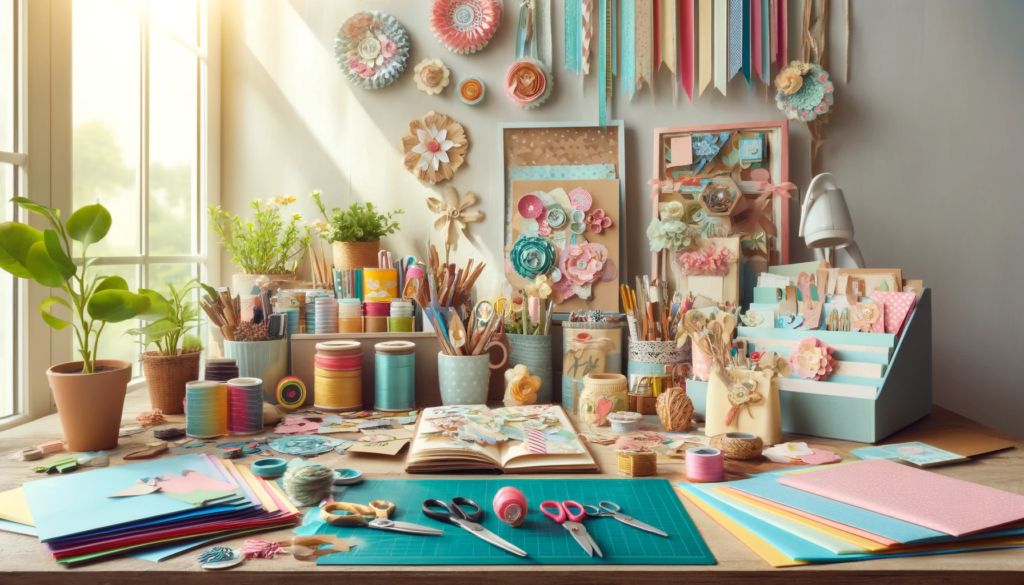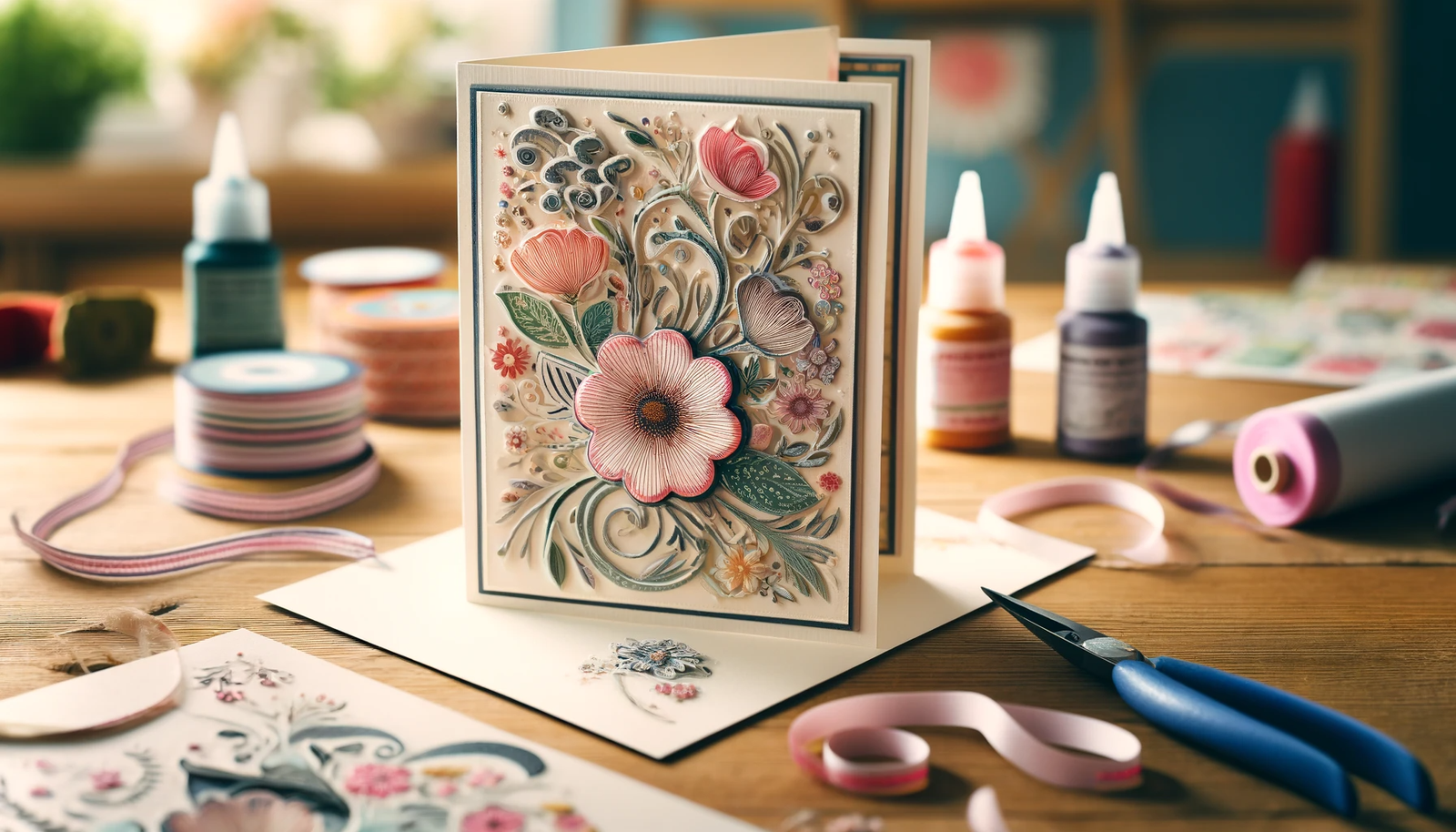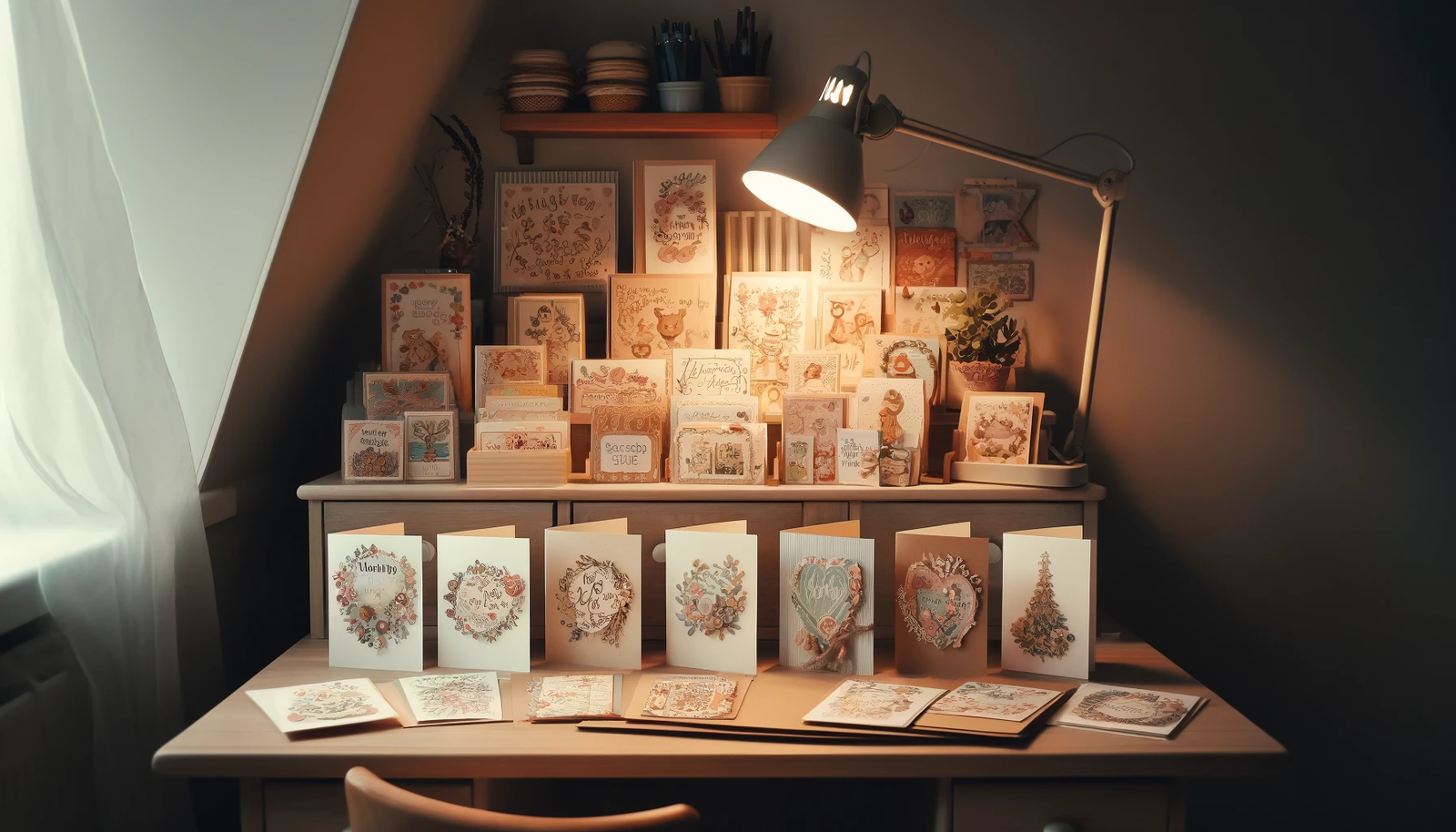
Introduction to Crafting: Unleashing Creativity with a Simple Project
Crafting is more than just a hobby—it’s a gateway to creativity, a stress reliever, and a unique way to personalize your world. Whether you’re looking to unwind after a long day or seeking a new hobby that provides tangible rewards, crafting offers an accessible pathway to both relaxation and satisfaction. The beauty of crafting lies in its diversity; there’s always something for everyone, from the absolute beginner to the seasoned artisan.
In this blog post, we’ll focus on a delightful crafting project perfect for beginners: handmade greeting cards. This project is designed to introduce you to the world of DIY with simple steps, minimal required materials, and no previous skills necessary. By the end of this guide, you will have crafted a beautiful, personalized greeting card, and you’ll also have gained the confidence to explore more crafting projects in the future.
Why start crafting? Here are a few compelling reasons:
- Stress Relief: Engaging in crafting can be a therapeutic activity, helping to alleviate stress and promote mindfulness.
- Creative Expression: Crafting allows you to express your creativity and personalize items exactly the way you want.
- Gift-Giving: Handmade crafts make thoughtful, personalized gifts that are often more appreciated than store-bought items.
- Cost-Effective: Many crafts can be made with inexpensive materials or items you already have at home, making it a budget-friendly hobby.
Whether it’s turning simple materials into beautiful handmade greeting cards, stringing beads to create stylish bracelets, or making custom tote bags, each project offers a unique blend of practicality and creativity. So, let’s get started and dive into the world of crafting, where your creativity is the only limit.
Crafting Basics: What You Need to Know Before Starting
Before you dive into your first crafting project, there are some basic supplies and preparations that will make the experience smoother and more enjoyable. Crafting doesn’t require a huge investment to get started, especially for the projects we’re tackling. However, setting up a small, organized space and having the right tools at hand can significantly enhance your crafting sessions.
Essential Crafting Supplies for Beginners
When you’re just starting, it’s important to keep it simple. Here’s a list of basic crafting supplies that are versatile enough for numerous projects:
- Scissors: A sharp pair of scissors is crucial for most crafting projects. Invest in a good pair that can cut through various materials cleanly.
- Adhesive: Depending on your projects, you might need different types of adhesives. Glue sticks, double-sided tape, and hot glue guns are great starters.
- Paper and Cardstock: For projects like greeting cards or photo frames, having a variety of paper in different colors and weights is essential.
- Ruler and Measuring Tape: Precision is key in crafting, so having tools to measure accurately will help ensure your projects turn out just right.
- Pencils and Markers: For sketching designs, outlining, or adding decorative details, a good set of pencils and markers is indispensable.
- Craft Knife: For more precise cuts that scissors can’t achieve, a craft knife is extremely useful. Always use it on a cutting mat to protect your surfaces.
- Basic Sewing Kit: For projects involving fabric, like tote bags, a simple sewing kit with needles, thread, and pins will suffice.
Setting Up Your Crafting Space
You don’t need a large studio to start crafting; a small table or a clear area in your living room can serve as a perfect spot. Here’s how to organize a functional crafting space:
- Lighting: Good lighting is crucial. Natural light is best, but if that’s not possible, ensure you have a bright desk lamp.
- Storage: Keep your supplies organized and within easy reach. Use storage bins, jars, or drawers to categorize and store your materials neatly.
- Comfort: Make sure your crafting area is comfortable. A chair with good back support and a table at the right height will make a significant difference in how long you can craft comfortably.
- Inspiration: Surround your space with items that inspire you, such as books, photos, or even plants. A visually appealing space can stimulate creativity.
Preparing your crafting space and supplies ahead of time means you can focus on enjoying the process and learning new skills without interruption. With these basics in place, you’re now ready to start your first project and enjoy the creative journey that awaits.
Crafting Handmade Greeting Cards: A Step-by-Step Guide for Beginners
Creating handmade greeting cards is a delightful entry into the world of crafting. Not only do these projects allow you to express creativity and personal sentiments, but they also make for thoughtful gifts that carry a personal touch. Here’s how you can start creating your own unique greeting cards.
Materials Needed
To begin, gather the following supplies:
- Cardstock: Choose high-quality cardstock as the base for your cards. It comes in various colors and textures.
- Decorative Papers: Patterned or textured papers can add depth and interest to your cards.
- Stamps and Ink Pads: Rubber stamps and colorful ink pads are perfect for adding designs and messages.
- Embellishments: Ribbons, buttons, stickers, and glitter can be used to decorate your cards.
- Adhesives: Double-sided tape or craft glue will help secure your materials.
Step-by-Step Guide
Follow these steps to create your first handmade greeting card:
- Choose Your Design:
- Decide on a theme or occasion for your card, such as a birthday, holiday, or thank-you note.
- Sketch a few layout ideas on plain paper.
- Cut Your Cardstock:
- Cut the cardstock to the desired size. A standard card is usually 5 x 7 inches.
- Fold the cardstock in half to form your card base.
- Design the Front:
- Apply a background layer of decorative paper. Trim it slightly smaller than your card base for a framed look.
- Use stamps to add images or messages. Experiment with placing them on the front of the card.
- Add embellishments to enhance the visual appeal. For instance, a ribbon tied in a bow or a few strategically placed buttons can add a touch of elegance.
- Write a Personal Message:
- Inside the card, write a heartfelt message. You can handwrite it for a more personal touch or use a printed insert if your handwriting isn’t as neat as you’d like.
- Final Touches:
- Review your card for any additional decorations or adjustments.
- Use a fine-tip pen to add small details or borders around the edges of the card.
Benefits of Handmade Greeting Cards
- Personalization: Each card is unique, reflecting personal style and the relationship with the recipient.
- Therapeutic Activity: The process of designing and creating can be incredibly relaxing.
- Cost-Effective: Homemade cards often cost less than store-bought ones, especially when materials are bought in bulk.
Handmade greeting cards stand out in a world where digital communication dominates. They show the recipient that you took the time and effort to create something just for them, making these cards not just a craft project but a meaningful gesture of affection and thoughtfulness.

Embracing Modern Numismatics with Digital Tools and Resources
“Coin Collecting for Beginners” also embraces the modern aspects of numismatics by providing a thorough overview of digital resources and tools that are revolutionizing coin collecting. This includes guides on using online auctions and forums, digital databases for coin tracking and verification, and the latest in numismatic software for cataloging your collection. These tools not only make it easier to manage and expand your collection but also connect you with a global community of fellow enthusiasts.
Crafting Communities and Resources
After dipping your toes into the crafting world with projects like handmade greeting cards, you might find yourself eager to explore more and share your newfound passion. Engaging with crafting communities and utilizing various resources can greatly enhance your crafting journey. Whether online or in-person, these communities offer support, inspiration, and knowledge that can help you grow as a crafter.
Joining Online Forums and Local Workshops
- Online Forums: Platforms like Craftster or Reddit’s crafting forums provide spaces where you can ask questions, share projects, and connect with fellow craft enthusiasts. These forums are great for getting feedback on your work and learning new techniques.
- Local Workshops: Many local craft stores and community centers offer workshops. These can be wonderful opportunities to learn new skills under the guidance of experienced instructors and to meet other crafters in your area.
Top Blogs and Websites for Inspiration
- P.S. I Made This: A blog that offers a wealth of DIY craft projects that cater to all skill levels, from beginners to advanced crafters.
- The Spruce Crafts: Features a variety of crafting categories with detailed tutorials and tips, suitable for any crafter looking to expand their knowledge.
- Martha Stewart: Known for her detailed craft projects and decor ideas, Martha Stewart’s site is a fantastic resource for seasonal and sophisticated crafts.
Leveraging Social Media for Ideas and Feedback
- Pinterest: Ideal for inspiration, Pinterest offers countless ideas and how-to guides for any type of craft project. You can create boards to save your favorite ideas and also share your own projects.
- Instagram: A visually-oriented platform perfect for showcasing your crafts and discovering what others are making. Use hashtags like #crafting, #DIYprojects, or #handmadecrafts to find and join the wider crafting community.
Craft Magazines and Books
- Magazines like Mollie Makes and Make: Magazine offer trendy and contemporary craft ideas, along with patterns, tools, and tips.
- Books: Titles like “The Arts and Crafts Busy Book” by Trish Kuffner provide numerous activities and projects that you can do at home, serving both as a guide and a source of inspiration.
Conclusion: Embarking on Your Crafting Journey

Crafting is not just about making things; it’s about expressing yourself, learning new skills, and being part of a community that shares your interests. As you continue on this path, remember that every crafter was once a beginner, and every project offers an opportunity to improve and innovate.
Stay tuned for more in this series where we’ll explore additional simple and enjoyable crafting projects. Keep an eye on our site for upcoming articles that will help you continue your journey into the creative world of DIY crafting. This is just the beginning—each project builds on the last, expanding your skills and broadening your crafting horizons.
Crafting offers a delightful escape into creativity and self-expression. By taking advantage of the resources and communities available, you can enrich your crafting experience and enjoy every step of your creative journey.
BECOME PART OF OUR COMMUNITY
Subscribe to our monthly newsletter.
Start your journey to us today!


